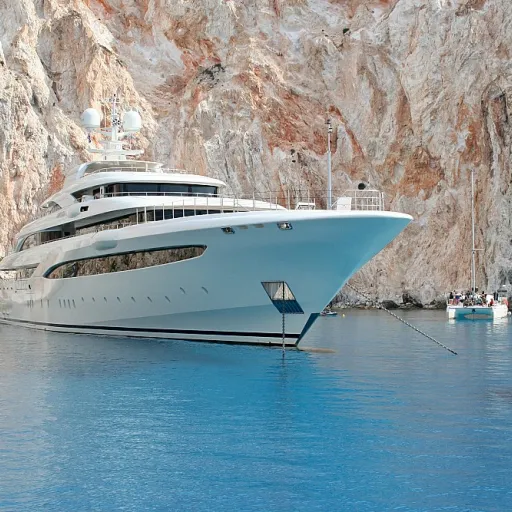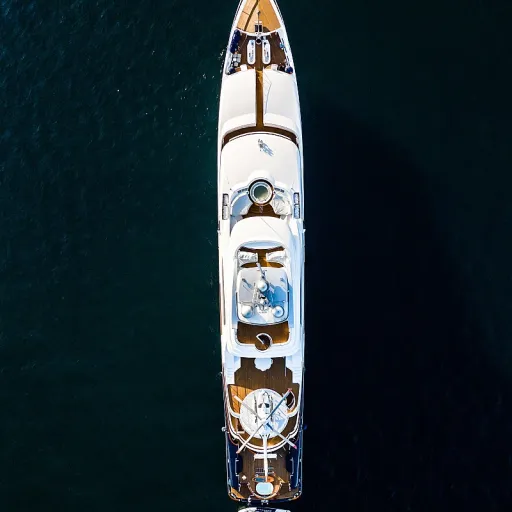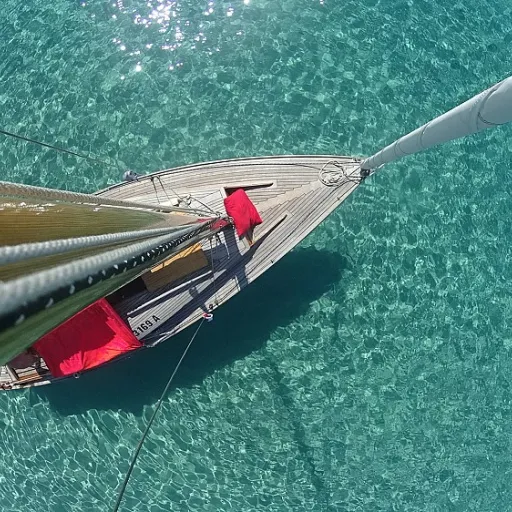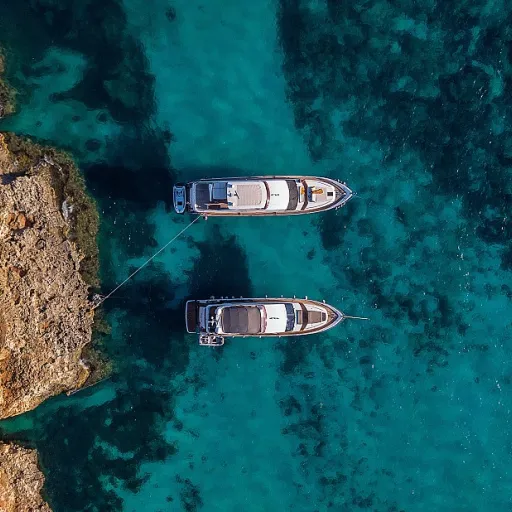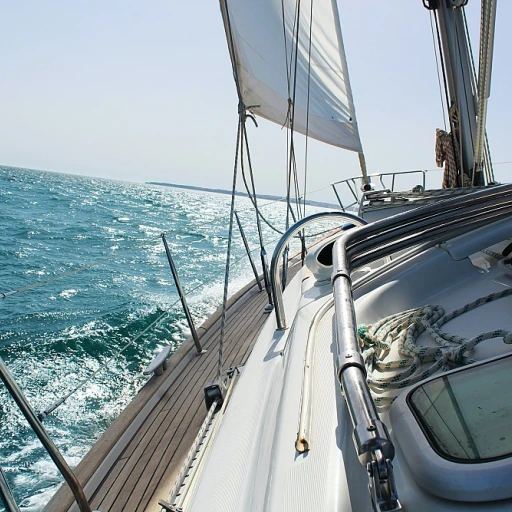
Understanding dyneema and its role in modern yachting
Why Dyneema Has Changed the Game for Yacht Ropes
In the last decade, Dyneema has become a go-to material for yacht enthusiasts and professionals alike. Known for its remarkable strength-to-weight ratio, Dyneema rope is now a staple in rigging, lifelines, soft shackles, and even custom whoopie slings. Its low stretch, high durability, and resistance to abrasion make it ideal for demanding marine environments where reliability is non-negotiable.
Comparing Dyneema to Traditional Rope Materials
Unlike polyester or nylon, Dyneema offers a unique combination of lightness and strength. For example, a Dyneema single braid rope of the same diameter as a polyester rope will be significantly lighter and can handle higher loads. This means less weight aloft and easier handling during splicing or when pulling a tail through a stanchion. Yacht owners appreciate how Dyneema lifelines and soft shackles reduce overall weight while maintaining safety and performance.
Splicing and Knots: The Dyneema Difference
One of the key reasons Dyneema is so popular is its compatibility with advanced splicing techniques. While knots like the figure knot or knot double can weaken traditional ropes, Dyneema excels with splices such as the eye splice, brummel splice, and long bury. These methods preserve more of the rope's original strength compared to knots, which is especially important for critical applications like lifelines or load-bearing loops. Splicing also allows for custom solutions, such as creating a splice eye or a soft shackle tailored to your yacht’s needs.
Understanding Rope Length and Splicing Considerations
When planning a Dyneema splice, it’s crucial to account for the length lost during the bury. Techniques like the long bury or bury splice require a portion of the rope—sometimes measured in fid lengths—to be tucked inside itself, which shortens the overall length. This is a detail often overlooked by those new to Dyneema, but it has real implications for rigging and performance, which we’ll explore further. For those interested in optimizing their yacht’s setup, understanding how to measure and plan for these changes is essential.
Modern Yachting and Dyneema’s Versatility
From lifelines to custom soft shackles and even innovative solutions like the whoopie sling, Dyneema’s adaptability is unmatched. Yacht owners can create custom loops, adjust rope diameter for specific loads, and use splicing thread for secure, reliable connections. Whether you’re pulling a tail through a stanchion or logging a new splice in your register, Dyneema offers flexibility that traditional ropes simply can’t match.
For more on how modern technology is enhancing the yachting experience, check out this guide on night lighting on yachts.
What is a dyneema bury and how does it work?
How a Bury Differs from Traditional Knots and Splices
When working with Dyneema rope, the bury technique stands out from classic knots and splices. Instead of tying a knot or using a simple loop, a bury involves tucking a section of the rope—called the tail—back into its own core. This creates a secure connection without the bulk or slippage often seen with knots. For yacht enthusiasts, this is especially important for lifelines, soft shackles, and eye splices where strength and minimal stretch are critical.
The Mechanics of the Bury Splice
To make a bury, you first measure out a specific length of Dyneema, often several fid lengths depending on the rope diameter and the type of splice (like a brummel splice or a long bury). The tail is then threaded back inside the single braid construction, using a fid or splice thread. This process is what gives the bury its strength: the load is distributed along the buried section, not just at a single knot point.
- Eye splice: Forms a permanent loop at the end of the rope, commonly used for attaching to a stanchion or creating a soft shackle.
- Whoopie sling: An adjustable loop made by splicing, useful for variable-length applications.
- Brummel splice: Adds extra security to the eye by locking the tail in place before the bury.
Why the Bury is Preferred in Yacht Rigging
Unlike a figure knot or knot double, a bury splice maintains nearly the full strength of the Dyneema rope. Knots can reduce strength by up to 50%, while a properly executed bury splice preserves much more. The result is a lighter, more streamlined rigging system—essential for modern yachts where every foot long of rope and every ounce matters.
Key Considerations for a Successful Bury
- Always match the bury length to the rope diameter—longer buries are needed for thicker ropes or higher loads.
- Taper the tail before burying to avoid abrupt transitions that could compromise the splice.
- Log register your splices, especially for lifelines and critical load-bearing applications.
For more on how hardware choices can complement your ropework, check out this guide on enhancing your yacht experience with aluminum boat hatches.
How dyneema bury can shorten rope length
Why the Bury Method Reduces Rope Length
When working with Dyneema, the bury technique is a cornerstone of strong, reliable splicing. But many yacht enthusiasts are surprised to find their rope ends up shorter than expected after a splice. This isn’t a mistake—it’s a direct result of how the bury works.
To create a secure splice, a section of the Dyneema rope—often measured in fid lengths based on rope diameter—is threaded back inside itself. This internal tail, or bury, forms the core of splicing strength, whether you’re making an eye splice, a brummel splice, or a soft shackle. The more load the splice must bear, the longer the bury should be. For lifelines, stanchion connections, or a whoopie sling, a long bury is essential for safety and durability.
- Bury length: The tail that’s buried inside the rope is no longer part of the working length. For example, if you start with a rope 30 feet long and bury 2 feet for a splice, your finished rope will be about 28 feet long.
- Splice type: Different splices—like a brummel splice or a simple bury splice—require varying lengths to be buried. Eye splices and soft shackles often need a longer bury for maximum holding power.
- Rope diameter: Thicker ropes require longer buries to maintain strength, which further reduces the final length.
It’s easy to underestimate how much rope is consumed by the bury, especially with single braid Dyneema. This is why careful planning and measurement are crucial before cutting your rope. If you’re replacing lifelines or rigging, always account for the length lost to the bury and any knots or figure knot terminations you plan to use.
For those new to splicing, using a log register or splice thread to track your measurements can help avoid costly mistakes. Remember, a proper splice will always be stronger and safer than a simple knot double, but it will also make your rope a bit shorter.
For more on safety considerations when working with spliced Dyneema lifelines and rigging, read this guide on enhancing safety with effective pontoon navigation lights.
Implications for yacht rigging and performance
Impact of Dyneema Bury on Rigging Efficiency and Safety
When working with Dyneema rope in yacht rigging, understanding how a bury splice affects overall rope length is crucial. The bury, which is the section of rope tucked inside itself during splicing, directly influences the final length of your line. This is especially important for applications like lifelines, soft shackles, and whoopie slings, where precise measurements are essential for both performance and safety. A long bury is often recommended for high-load situations, as it increases the strength and security of the splice. However, every inch of rope buried reduces the total usable length. For example, a typical eye splice or brummel splice may require a bury of 20 to 30 times the rope diameter. If you start with a rope that is 30 feet long and create multiple splices, you could lose several feet to the bury sections alone. This can be significant when planning lifelines or stanchion runs, where every foot counts.- Load Distribution: A proper bury ensures that load is evenly distributed, reducing the risk of failure at the splice. Inadequate bury length can compromise the integrity of the splice, especially under dynamic loads.
- Rigging Adjustments: After splicing, you may find that your rope is shorter than anticipated. This can affect the tension and fit of lifelines, soft shackles, or any application where precise length is required.
- Compatibility with Hardware: The finished splice, including the eye and tail, must fit through hardware like stanchions or around cleats. A bulky bury or knot double can make threading through tight spaces challenging.
Best practices for measuring and planning dyneema splices
Accurate Rope Measurement: Avoiding Surprises After Splicing
When working with Dyneema, getting your measurements right before you start a splice or bury is crucial. Unlike traditional rope knots, Dyneema splices—especially a long bury or brummel splice—can significantly reduce the finished length of your rope. This is because the rope you bury inside itself to create a secure eye or loop is no longer part of the working length. If you don’t account for this, your final rope or lifeline may end up feet long shorter than planned.
- Plan for the bury: The amount of rope you need to bury depends on the rope diameter and the type of splice. For a typical eye splice in single braid Dyneema, you’ll often need 24 to 72 times the rope diameter for the bury. For example, a 6mm rope may require a bury of 15 to 40 cm (6 to 16 inches).
- Use fid lengths: Many splicing guides reference fid lengths as a standard unit. One fid length is about 21 times the rope diameter. Always check the manufacturer’s recommendations for your specific rope.
- Account for taper and tail: When making a bury splice or brummel splice, don’t forget to include extra length for the taper and the tail that you’ll pull through the rope. This ensures the splice is strong under load and the eye or loop fits over your stanchion or shackle soft.
Tools and Techniques for Consistent Results
Using the right tools and techniques helps you achieve consistent, reliable splices. A fid or splicing needle is essential for threading the rope during a bury. Mark your rope with a log register or marker before starting, so you know exactly where to start and finish your splice. This is especially important for complex splices like the whoopie sling or soft shackle, where precise measurements impact performance and safety.
- Pre-mark your rope: Mark the start and end points for the bury, eye, and taper. This prevents mistakes and helps you track how much rope you’ll lose to the splice.
- Practice with offcuts: If you’re new to Dyneema splicing, practice on spare rope before working on your main lifelines or rigging. This helps you get a feel for how much length is lost to each type of splice or knot.
- Double-check before cutting: Always measure twice before making the final cut. Once you’ve buried and spliced, you can’t add length back to the rope.
Choosing the Right Splice for Your Application
Different splices and knots—like the brummel, eye splice, or figure knot—have different impacts on rope length and strength. For lifelines, a long bury provides maximum strength and minimal bulk, but it shortens the rope more than a simple knot double or soft shackle. Consider your application, load requirements, and how the rope will be attached to hardware like a stanchion or shackle soft.
| Splice/Knot Type | Typical Rope Loss | Best Use |
|---|---|---|
| Long Bury Eye Splice | High (up to 2-3 feet long per splice) | Lifelines, high-load loops |
| Brummel Splice | Moderate | General rigging, soft shackles |
| Figure Knot | Low | Temporary stops, low-load applications |
| Whoopie Sling | Variable | Adjustable loops, tensioning |
By carefully measuring, planning, and choosing the right splice or knot for your Dyneema rope, you’ll ensure your yacht’s rigging and lifelines are both safe and the correct length. Always follow best practices for splicing and consult your rope manufacturer’s guidelines for optimal results.
Maintenance and inspection tips for dyneema spliced ropes
Routine Checks to Keep Your Dyneema Splices Reliable
Regular inspection is key to maintaining the strength and reliability of Dyneema spliced ropes. Whether you’re dealing with a brummel splice, long bury, or a soft shackle, each type of splice and knot deserves close attention. Here’s what to focus on:- Visual Inspection: Look for signs of abrasion, discoloration, or broken fibers along the rope, especially at the bury, eye splice, and around stanchions or lifelines.
- Feel for Changes: Run your hand along the rope to detect any stiff spots, thinning, or bunching, which may indicate internal damage or a compromised bury splice.
- Check Splice Security: Gently pull the tail and loop of the splice to ensure there’s no slippage. A well-executed splice should hold under load without movement.
- Monitor Rope Length: Over time, splices and knots like the figure knot or whoopie sling can cause the rope to shorten. Keep a log register of original and current lengths, especially for critical applications like lifelines or soft shackles.
- Inspect Tapers and Fids: Make sure the taper at the end of a bury or eye splice is smooth and not unraveling. If you used fid lengths for splicing, confirm the taper is still intact.
Preventive Care for Long-Lasting Performance
- Wash Salt and Dirt: Rinse Dyneema ropes with fresh water to remove salt and grit, which can work into the fibers and accelerate wear.
- Dry Properly: Store ropes dry and out of direct sunlight to prevent UV degradation, especially for single braid constructions.
- Re-Splice When Needed: If you notice excessive wear at the splice eye, bury, or tail, consider re-splicing. Using a splice thread can help reinforce high-load areas.
- Avoid Overloading: Respect the recommended load for your rope diameter and application. Overloading can cause hidden damage to the splice or knot double.




